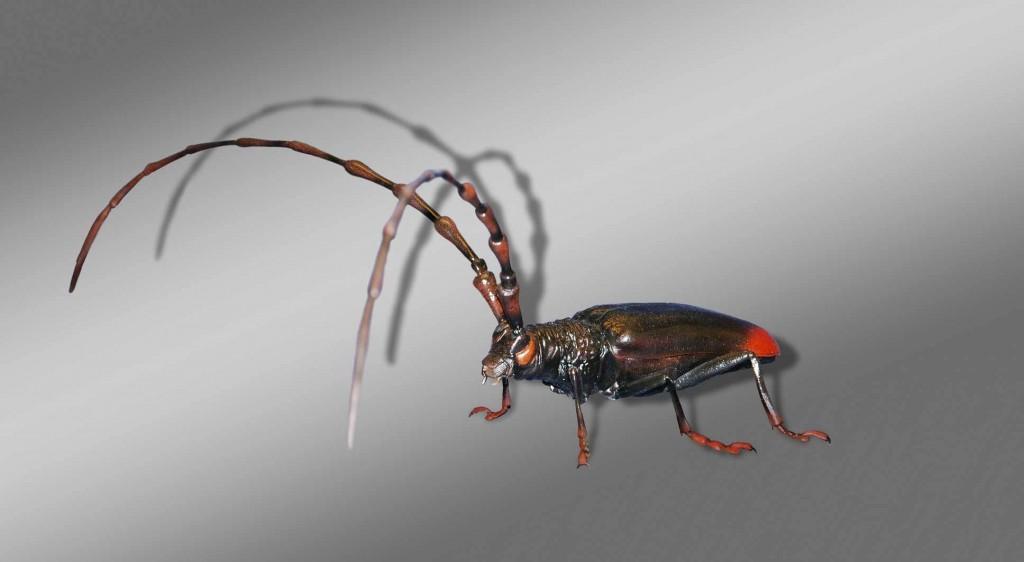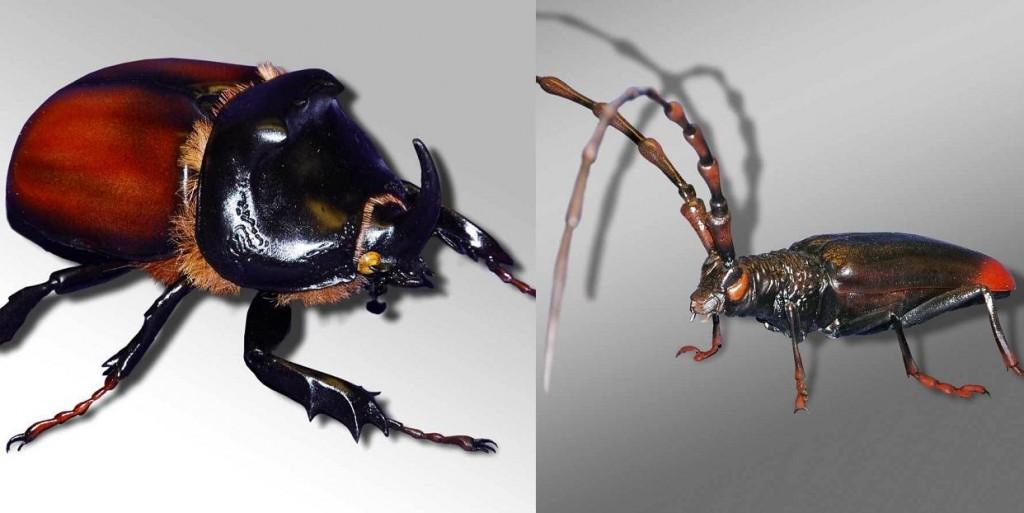
Leitl had devoted an incredible amount of time to 3D modeling and then printing intricately detailed insects. The idea seems like a simple one, but when you see what his creations actually look like, you will understand the amazing talent that Leitl possesses. If insects tend to give you the creeps, then these larger-than-life creations certainly won’t make you feel at ease.
Leitl is a huge fan of zBrush, as he uses it to model his insects. He then splits the models into two parts and hollows them out before exporting the 3D printable STL files into netfabb to scale them to his desired size.
His latest 3D prints may be even more incredible than his previous ones, as this time he elected to print out a vast array of insects, including a rosalia longicorn, a cerambyx cerdo, an eremit beetle, a stag beetle, a rhinoceros beetle, a violet click beetle and more. His insects are typically scaled up to around 30 times their real sizes, yet still only measure between 24 and 180 cm in length. This latest batch of insects measure between just 10 and 25 cm though.
When it comes time to 3D print these insects on his Form 1+ 3D printer, Leitl uses a Z-resolution of 0.1mm, and he lets the printer do all the work from there. Once the prints are off of the printer, Leitl removes the support, and then soaks them in Isopropyl Alcohol (IPA).
“I just let the print soak for 2 to 5 minutes in the IPA then I brush it with a soft longhaired brush until it doesn’t feel slippery anymore,” Leitl explained.
Then it is off to airbrushing them with the appropriate colors before putting a clear coat on top. As you can see, the results are really quite phenomenal, so much so you probably would have never guessed that these were created on a 3D printer, let alone a $3299 one. What do you think about these unique 3D printed insects? Discuss in the 3D printed insect forum thread on 3DPB.com.
————
Don’t need forum. I used an old one….. and already linked to it.
